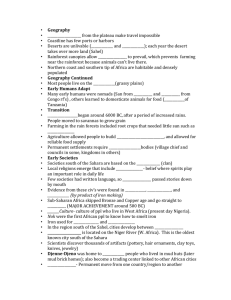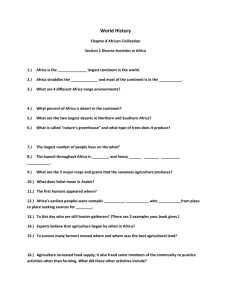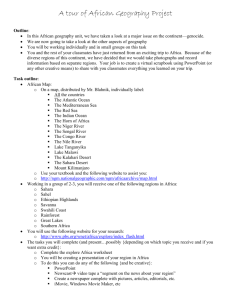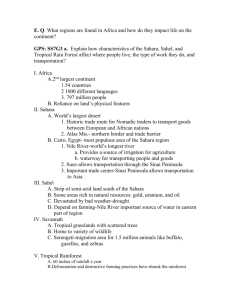Global Studies Africa Diverse Societies in Africa
advertisement
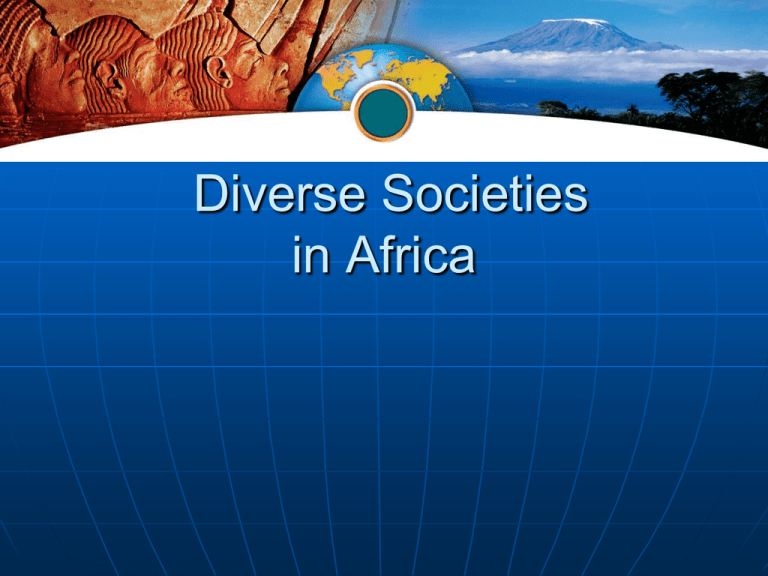
Diverse Societies in Africa What is the Geographic Overview? Geography of Africa • Large continent, but coastline has few ports, harbors, or inlets Challenging Environments • Africa has many deserts, including huge Sahara • The southern edge of expanding Sahara is called the Sahel. • Rainforests are found near the central part of the continent. What is the Geographic overview? Welcoming Lands • Northern Coast and southern tip of Africa have Mediterranean Climates • Savannas, or grasslands cover most of Africa How did the Early Humans Adapt to their Environments? Nomadic Lifestyle • Earliest peoples are nomadic hunter-gatherers. • Herders drive animals to find waters and graze pastures. Transition to a Settled Lifestyle • Agriculture probably develops by 6,000 B.C. • As the Sahara dried up farmers move to West Africa or Nile Valley. • Agriculture allows permanent settlements and governments to develop How did the Early Societies in Africa organize? Societies organized by Family Groups • Extended families made up several generations • Families with common ancestors form groups known as clans Local Religions • Early religions usually include elements of animismbelief in spirits inhabiting objects Keeping a History • Few African societies have written languages • History, literature, culture passed on by story tellers called griots. • Cultures in West Africa are advanced long before outsiders arrive. West African Iron Age Learning about the past • Artifacts reveal how people lived in the past. • Evidence of sub-Saharan cultures producing iron around 500 B.C. Nok Culture • Nok—West Africa’s earliest known culture—made iron tools and weapons West African Iron Age Djenne-Djeno • From 600-200 B.C., cities began to develop near rivers and oases • Djenne-Djeno, Africa’s oldest known city, was discovered in 1977. • It was a bustling trade center that was linked to other West African towns through camel trade routes.
